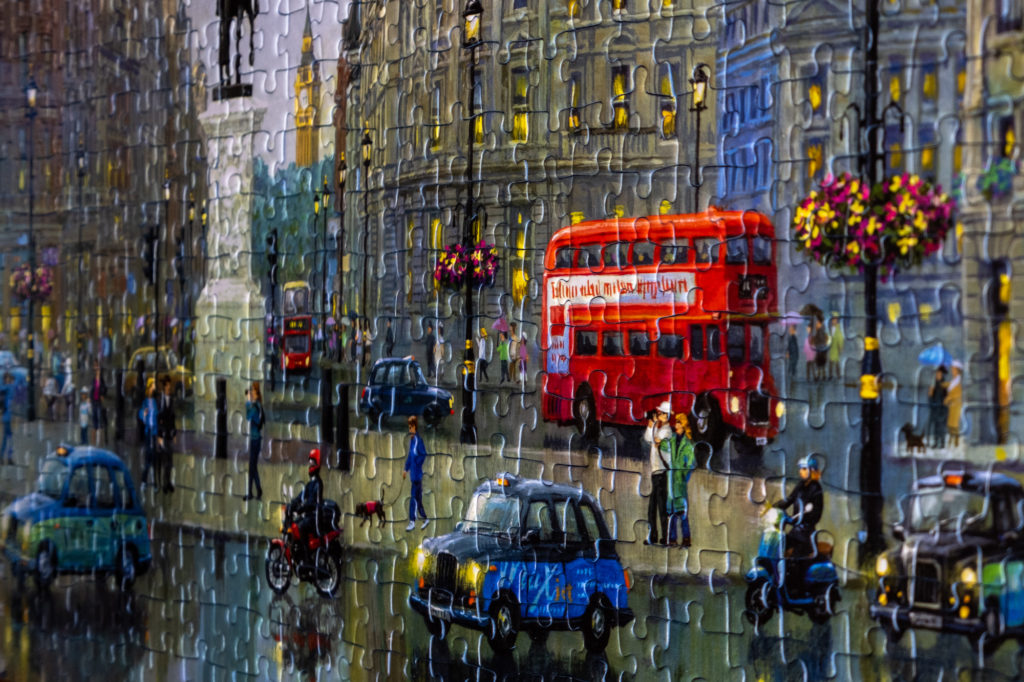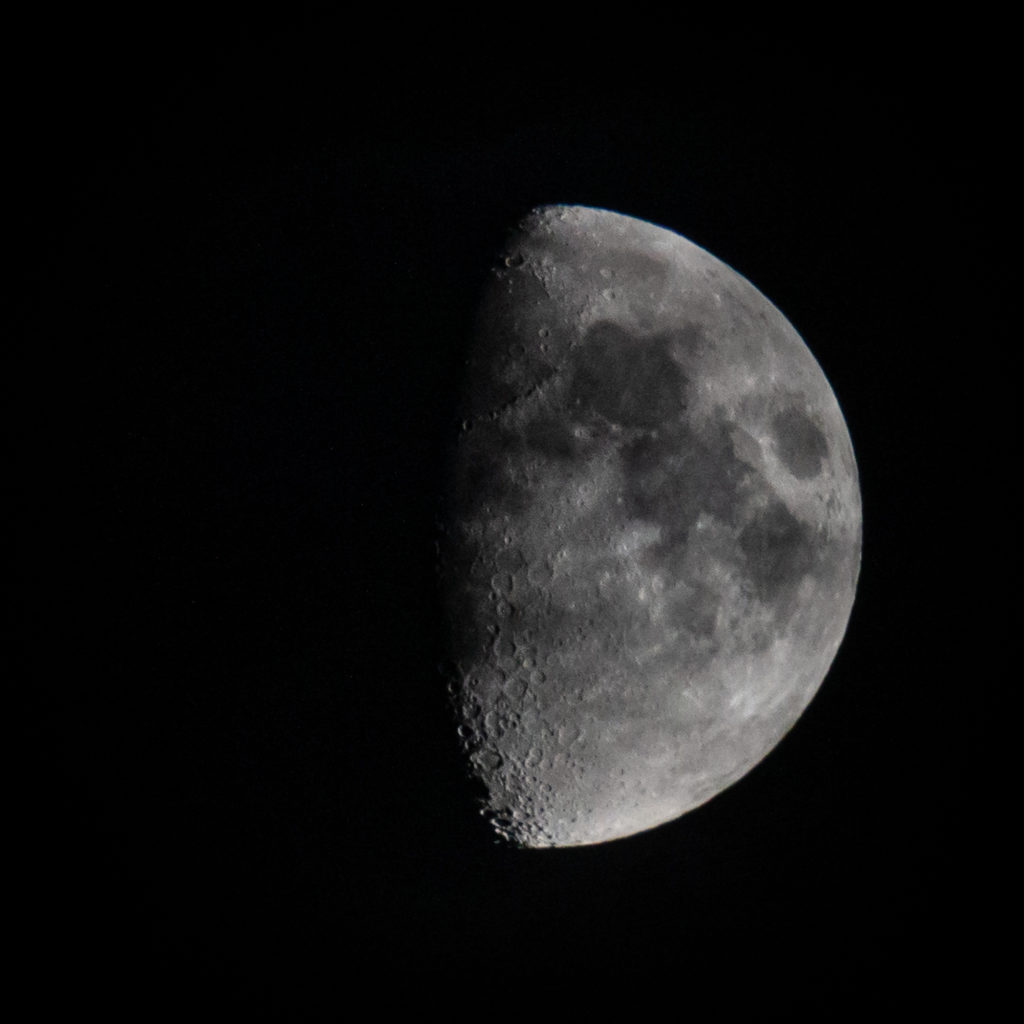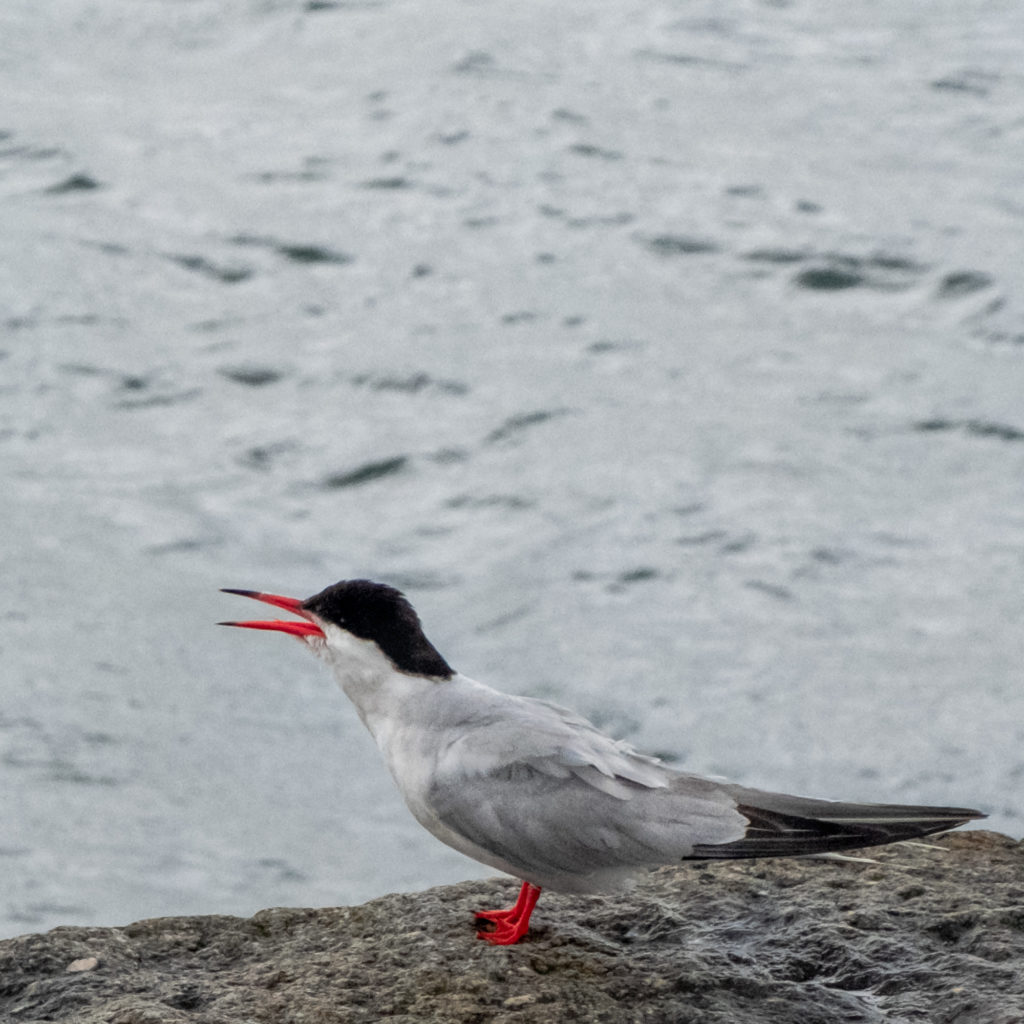The summer weather has not been kind here in Dublin. In a mock despair, we ended up doing a jigsaw puzzle on the kitchen table while it lashed rain. The puzzle took several days and it made an interesting photographic challenge once completed. How do you make a jigsaw interesting but different to the picture on the box? There are hundreds of ways but I wanted to do it with a tilt-shift adaptor on a 50 mm manual lens. I really like this photo with a focal emphasis on two tourists in front of an iconic London bus. It was raining there too.

The moon appeared the other night which was quite a surprise given the recent weather. Lia noticed it out through the bedroom window. It had just emerged from behind the peak of the hill on which we live. You might think me strange for keeping a camera with a 600 mm lens ready my bedside. It’s been waiting together with binoculars for any appearance of the Neowise comet. Stellarium shows the comet to be low in the sky to the north and west of my viewpoint. I’m sure it’s there, judging by the count of the phenomenal photos I’ve seen. However, our dark time view has been occluded by distant cloud or local hill mist for over two weeks.
I took the very heavy lens and heavy camera and set the shutter speed to 1/400s. One rule of thumb is that the shutter speed number should match or exceed the focal length but I had to compromise. The minimum aperture at 600mm is f/6.3 so I had to balance the risk of blur from camera shake versus sensor noise. A wisp of cloud passed in front of the moon which reduced the glare of the reflected light just enough to balance the contrasts. There would be a surface shadow but photography is about taking what you can get. I took a deep breath, braced myself and shot with ISO 3200. The craters are sharp and I’m content. ⸮ƨiʜɈ ɘnob ɘvɒʜ blυoɔ ɘʜ ʇi biɒƨ ɘvɒʜ iɔniV ɒႧ blυow ɈɒʜW

Regular readers of this journal probably realise that I carry a camera almost wherever I go. A smartphone is great but the shutter lag and the tiny lens make it hard to capture what Cartier-Bresson called the ‘decisive moment’. I believe that the 18-55mm lens on a Fuji X-T3 is good enough for most street photography. It’s light to carry, unobtrusive, weather-proof (a bit), easy to operate and instantly available.
While walking, I set the lens to f/8 or thereabout and let the ISO range automatically to no more than 1600 during daylight. I’ve moved the focus button to the back, separating it from the exposure meter which is triggered by the initial half-depression of the shutter button. For the street, I set the shutter to snap at a speed determined by the exposure meter. I tend to use the electronic shutter for street photography both because it’s silent and can go to ridiculously short exposures. I’ve recently shot swans in only 1/23,000s, so to speak.
We were out walking this morning on a pier built in the 1850s from granite scalped off the hill where we live. It was blustery and the varied seabirds were being buffeted in a fashion that was exhausting to watch. Then a Common Tern set down for a rest about three metres from us.
I took this at 1/1700s and the Common Tern obliged by opening its beak at the decisive moment. It’s not for bird magazine submission but as street photography, it’s a very satisfying shot.


Leave a Reply